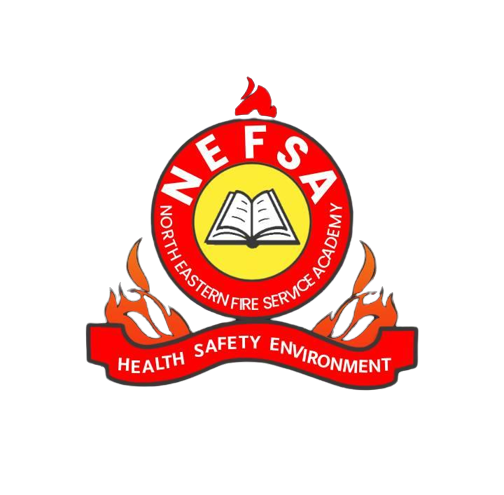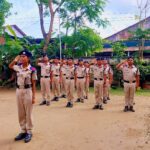Fire safety isn’t only the fire department’s job it’s everyone’s responsibility. Students (school, college, and university) live, study, and socialize in buildings where small mistakes can quickly become serious emergencies. This guide condenses best practices from major safety organizations into clear, actionable strategies students can start using today. The recommendations below are practical for dorms, hostels, classrooms, and rented apartments.
1. Treat smoke alarms like exam reminders test them regularly
Make it a habit: test smoke alarms monthly and replace batteries at the start of each semester or when the unit chirps. A working smoke alarm gives the extra seconds you need to escape. Many housing fatalities are prevented simply by early warning from functioning alarms.
2. Know two ways out from every room and agree on a meeting spot
Every student should be able to name two exits from any classroom, dorm room, or study area. Post or learn the building evacuation map and choose a fixed outdoor meeting point so roll-calls are fast and accurate after evacuation. Regular campus and classroom drills reinforce this muscle memory.
3. Cooking safety
Unattended cooking is the #1 cause of fires in student housing. Never leave pans or kettles unattended, keep flammable items (paper towels, cloths) away from the stove, and never pour water on a grease fire instead smother it with a lid or use an appropriate extinguisher. If your housing restricts cooking, follow the rules they exist because of risk.
4. Electrical sense: avoid overloaded outlets and damaged cords
Do not daisy-chain extension cords or overload power strips. If an outlet or appliance feels hot, unplug it and report it to housing or facilities immediately. Faulty wiring and overloaded circuits are common, preventable ignition sources in densely populated student housing.
5. Keep escape routes clear no storage in corridors or stairwells
Hallways, stairwells, and exit doors must remain unobstructed. Blocking these areas slows evacuation, endangers responders, and may violate fire codes. Store bicycles, boxes, and furniture only in approved spaces.
6. Learn how and when to use a fire extinguisher the PASS method
If it’s safe and the fire is very small, remember PASS: Pull the pin, Aim low at the base, Squeeze the handle, Sweep side to side. Only attempt extinguishing if you have a clear escape path and the fire is manageable otherwise evacuate and call emergency services.
7. Don’t disable alarms for minor nuisances find the root cause
Students often silence alarms during cooking or maintenance. Disabling detectors removes a critical safety layer. Instead, ventilate, address the source (e.g., clean a microwave), and notify housing to investigate persistent false alarms.
8. Create and practice personal evacuation plans (including night scenarios)
Fires can start while you sleep. Practice waking up to an alarm and exiting low (smoke rises) crawling if necessary and rehearse meeting your group outside. Colleges should run drills at different times to simulate real conditions.
9. Avoid risky behaviors: candles, incense, and smoking restrictions
Candles and incense are frequent causes of accidental fires in student accommodation use battery-operated alternatives. Obey smoking policies: smoking indoors or in non-designated areas drastically increases risk.
10. Report hazards quickly you’re the campus’s eyes and ears
Broken detectors, overloaded panels, flickering lights, or burnt smells should be reported immediately to campus facilities or hostel managers. Early reporting reduces the chance a minor fault becomes a major incident. Many institutions have simple reporting channels use them.
Quick dorm/hostel checklist (copy & post)
-
Smoke alarm tested this month
-
Two exits identified for every room used
-
Cooking never left unattended
-
No overloaded sockets or hot plugs
-
Hallways & stairwells clear of items
-
Fire extinguisher location known and inspected
-
Evacuation meeting point agreed with roommates/friends
-
Candles & incense replaced with electronic options
-
Any hazard reported to housing/facilities
How NEFSA can help students and institutions?
NEFSA Fire Academy provides tailored training from basic fire prevention workshops for students to campus-level fire safety audits and evacuation planning. Schools and colleges can partner with NEFSA to run hands-on drills, demonstrate extinguisher use, and audit dorm fire risks to reduce real-world vulnerabilities. (NEFSA frequently runs practical sessions focused on campus and hostel safety.)
Final word
Fire prevention is built from small, consistent habits: testing alarms, staying present while cooking, and reporting faulty equipment. Students who adopt these practices not only protect themselves but also contribute to a safer campus community. Teach others, run drills, and treat fire safety as an ordinary, essential part of student life.
Sources & further reading
(Selected authoritative resources consulted while preparing this guide.)
-
U.S. Fire Administration — Fire Safety for College Students. usfa.fema.gov
-
National Fire Protection Association (NFPA) — Campus and dorm fire safety / school inspection guidance. NFPA+1
-
American Red Cross — Fire Safety for Kids & Back-to-School safety tips. Red Cross+1
-
University fire-safety pages and campus safety guidance (examples: Portland Fire, Syracuse DPS, Potsdam EHS). portland.gov+2dps.syr.edu+2
-
NEFSA Fire Academy — training programs and campus safety outreach. nefsaindiablog.com+1
Contact us today to know more about admissions, batch schedules, and course details.
Visit: www.nefsaindia.com
Location: Dibrugarh, Assam
For More Blogs:- Click here







